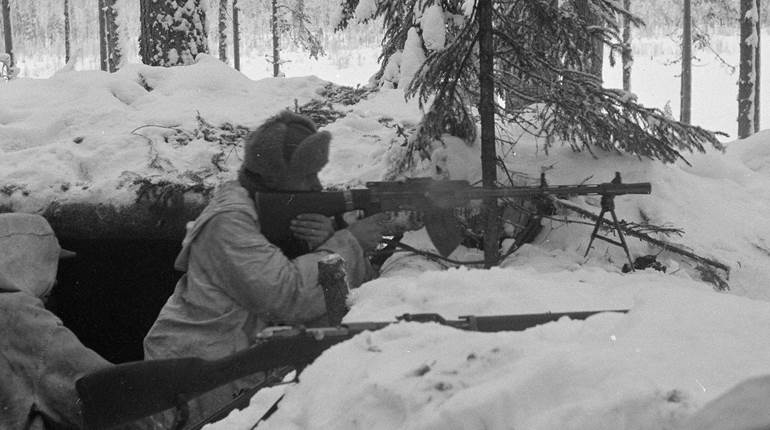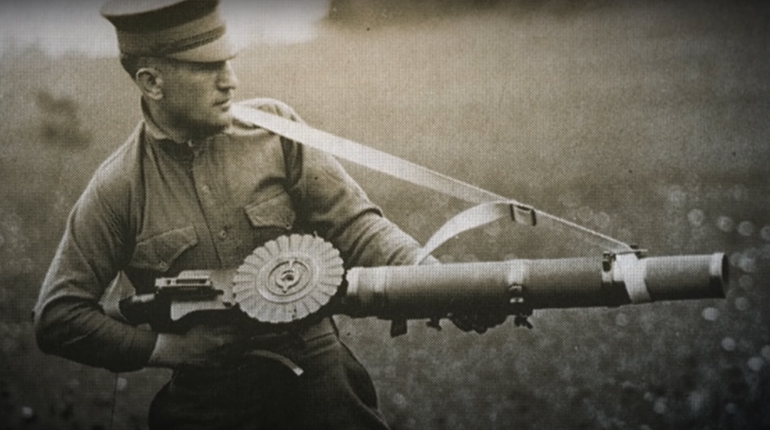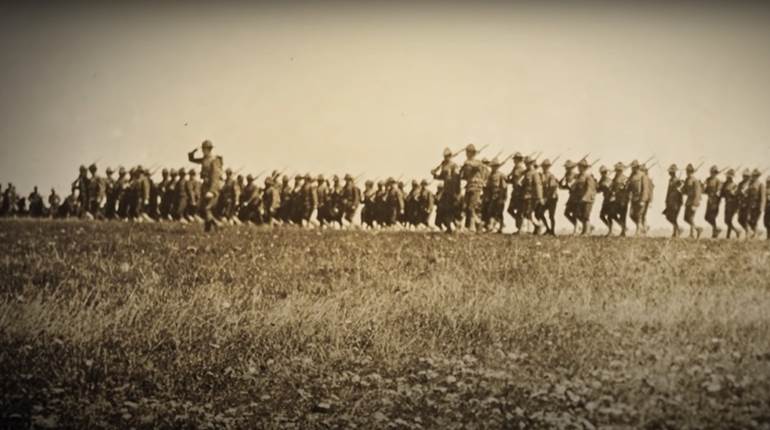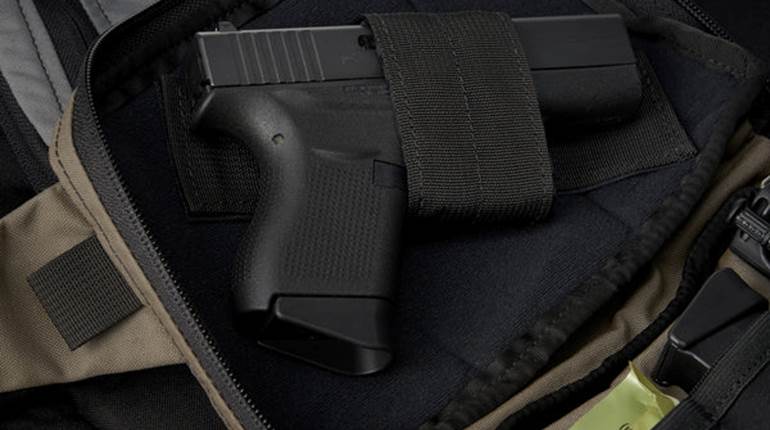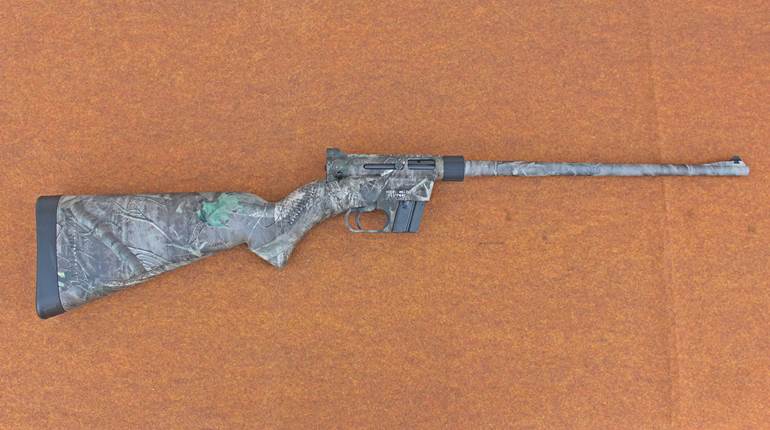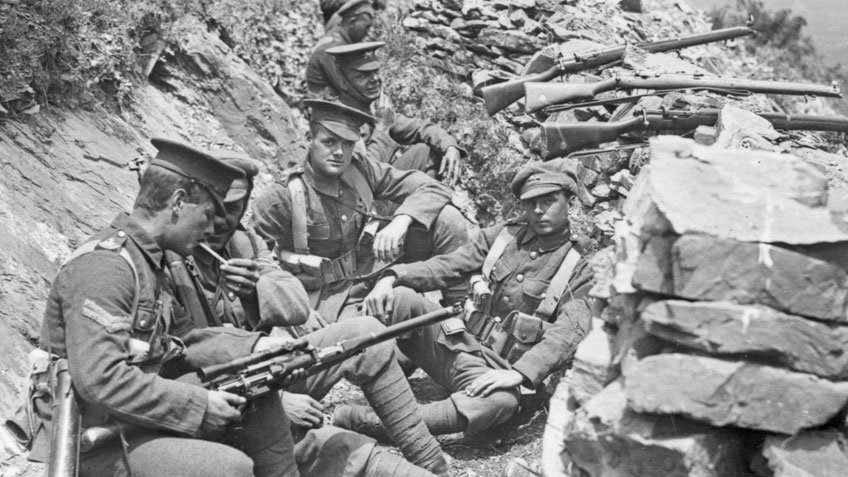
This photo of British snipers of The King's Own (Royal Lancaster Regiment) on the Salonika front in 1916 shows a corporal holding a Short, Magazine Lee-Enfield fitted with a Periscopic Prism Co. scope. Interestingly, the first and third rifles balanced on the wall have Galilean sights mounted.
For the first year on the Western Front, the Allies took a thrashing from German snipers. By mid-1915, however, a more permanent solution had been devised in the form of a dedicated sniping rifle for use by the Allies. Alas, despite showing much promise, the Pattern 1914 Enfield rifle—ironically based on the Mauser action, but chambered for the potent new .276 cartridge—was not adopted at the start of the war, as tooling for mass production simply could not be made in time. So it fell to the standard infantry rifle, the Short, Magazine Lee-Enfield (SMLE) Mk III, affectionately known as the “Smellie,” (“Short,” incidentally refers to the barrel length, 25.2", not the magazine, as is often supposed), despite the fact that the relatively thin-walled short barrel did not lend itself to accurate long-range shooting.

In May 1915, the War Office issued a tender, No. S.A. 390, asking for designs to be submitted for the production of a telescopic-sighted rifle, based on the SMLE. Two companies, the Periscopic Prism Co. of London and the well-established Aldis Brothers of Birmingham, submitted designs using their own 2X scopes. These were large-bodied scopes that used a locking side-mount and had a vertical post and crosshair reticle. They had elevation drums normally graduated to 600 yds., but a complex method of windage adjustment via the objective lens that meant, once zeroed, few snipers ever altered it, relying instead on experience to determine how much to hold off. These modified rifles had to achieve two minute-of-angle (m.o.a.) groups at 100 yds., and, of the two, the Periscopic Prism scopes were by far the most numerous, almost 5,000 being issued compared to 3,000 Aldis. Another variant, using a commercial 5X Winchester A5 scope, was also submitted, although fewer than 1,000 were manufactured.
These were by no means the sum totals issued, however, hundreds more SMLEs were converted by British gunsmiths, such as Holland & Holland, Purdey, Evans, Greener and many others, using a wide variety of scope types and mounts. Unfortunately, all these scope variants were offset—meaning the scopes were not directly over the bore line—which proved to be the bane of sniper’s lives. This was due to military insistence that the rifles had to be capable of being charger-loaded, which showed a deplorable lack of understanding on the part of the army as to the role of a sniper. Issue of these specialty rifles was initially haphazard and ineffectual. Lieutenant V. Hesketh-Prichard, one of the few officers in the army with real experience using telescopic-equipped rifles, wrote despairingly about their early issue. Finding a puzzled-looking private with a brand-new scoped rifle, he asked if the man had ever used one, the reply being negative. He then asked how he had come by it and found it had been randomly issued by the quartermaster as “trench stores.”

The Commonwealth snipers attached to the British army—Australian, Canadian, South African and New Zealander—also used the SMLE, the Canadian Ross rifles having proved a failure (June 2013, p. 58). Devised as a hunting arm, when used with good-quality ammunition and kept scrupulously clean, it was very accurate indeed, but trench life was hard on rifles. Indifferent ammunition and the problems of mud- and dirt-fouled breeches proved more than the Ross could cope with, and they were withdrawn in 1916. A few, however, continued in a sniping role with the Canadian Expeditionary Force. They were variously equipped with the bulky 5.3X Warner & Swasey Model 1908 or Model 1913 prismatic scopes, Winchester A5 and Periscopic Prism or Aldis scopes and stripped of their forward woodwork to eliminate accuracy-reducing pressure on their barrels.

Despite a slow start, the Commonwealth began to organize itself, quickly finding out that taking men who volunteered was far more effective than simply detailing a man to become a sniper. Many good shots simply did not possess the intelligence, patience and innate hunting instinct that was required, and Hesketh-Prichard commented that hunters, gamekeepers and poachers made the best snipers. Sniping schools were set up in both the United Kingdom and France, and a curriculum was devised. Normally lasting 14 days, the training covered all of the requirements to enable a sniper to function effectively and stay alive—and this formed the basis for today’s sniper training. Unlike the German courses, each element: camouflage, fieldcraft, range estimation, etc., was treated separately, and scouting and observation were regarded as equally important to shooting, as was the ability of the men to draw accurate maps.
In training, snipers were instructed to aim for the teeth if possible, as over- or under-estimating the range would still give a head or chest shot, both normally being fatal. The courses produced snipers who would become the eyes and ears of the army, able to watch and report on enemy movements; indeed, their official qualification was “Scout Sniper” and their badge resembled the fleur-de-lis of the Boy Scouts.
By the end of 1916, the Allies were holding their own in the sniping war, and in places were fast becoming the dominant force. Whilst they normally worked in pairs, at times they adopted a unified approach, as Pvt. J. Rogers of the Sherwood Foresters wrote. Troubled by a well-concealed German sniper, three sniper posts teamed up. “We all took bearings which we compared when we met at HQ … and checked them on a map. We drew lines along each bearing and where they met we marked the position. Next morning we could see a large bucket, that didn’t seem to have a bottom to it. We three snipers set our sights on the bucket, and when there was a shot from it we all fired simultaneously.” Sniping from the bucket ceased.
The entry of the United States into the war in late-1917 posed something of a problem for the commanders of the American Expeditionary Force (AEF). Sniping had not been on their list of priorities, so there was no viable training procedure available. The Springfield Model of 1903 was a very competent battle rifle, but as with their Allies, no thought had been given to providing a sniping variant, so some 1,500 Model 1913 Warner & Swasey scopes were purchased and quickly fitted. These varied slightly from the Canadian versions in having a different range drum, but they suffered from the same shortcomings—especially very poor eye relief. An American rifleman and Canadian sniper, Herbert McBride, commented dryly that shooting one “… would make a flincher out of a cigar-store Indian.” They were heavy and bulky, with limited low-light vision due to the small objective lens and, of course, an offset mount. Nevertheless, it was the best available, and though some Marine Springfields with Winchester A5s found their way to the front, the war ended before any really significant numbers could be produced or a new, dedicated rifle and scope combination devised. American snipers undertook a course under Commonwealth instructors and, by the end of the war, were proving a potent force.
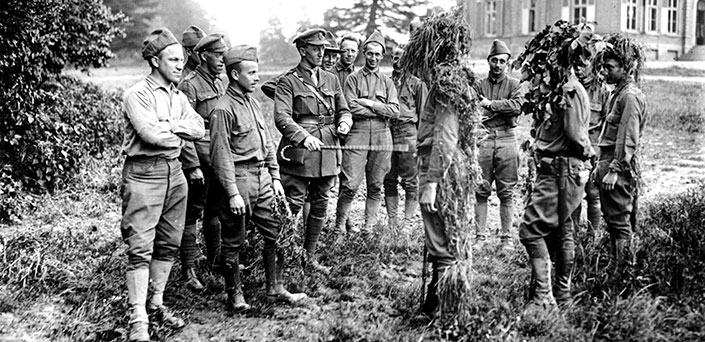
As far as the accuracy of the snipers is concerned, the speed of reaction of the Germans was legendary, one unfortunate British officer who peered over a trench parapet on the Somme (despite being warned not to) was struck simultaneously by bullets from two snipers. On average it took three seconds for a sniper to observe, aim and fire, which leads credence to the superstition that it was unlucky to light three cigarettes from the same match. In low light a sniper was able to aim and fire by the time the third cigarette was lit. In terms of accuracy, this was mostly limited by the power of the optics and quality of ammunition. Most Commonwealth snipers had their favorite brands of ammunition, McBride favored Winchester, and British Kynoch was also highly regarded; but no special sniping ammunition was ever issued to either Allied or German snipers, although later in the war some armor-piercing ammunition was supplied to the Germans.
Of course, weather conditions played a major factor, Hesketh-Prichard wrote that he believed shooting beyond 400 yds. in any but the most wind-free conditions was simply a waste of ammunition, and even then a body hit was the best that could be achieved. This was actually no real problem, as the average range for trench sniping was under 300 yds. Not that lack of suitable technology was a hindrance to many of the American riflemen, who, like their Civil War forebears, had handled rifles since childhood. Herman Davis, a farm boy from Arkansas serving in the 113th Infantry Regiment, took on a German machine gun crew at a distance of 1,000 yds. Having been told it was simply too far, he muttered, “Why, thet’s jest a good shootin’ distance,” and proceeded to kill five of the crew. He won the Distinguished Service Cross for the feat. One benefit for all of the snipers was the light-enhancing properties of the scopes, particularly at “sniper’s light”—early dawn or late dusk—which enabled a sniper to kill the unwary, who mistakenly believed they were invisible. Even at night, the tiniest illumination could be deadly. A British officer on patrol for the first time in “no man’s land” commented on the number of close “stray” bullets. His experienced companion pointed out that he was wearing a watch with a luminous face, and urged him to take it off.
There is no doubt that it was the Great War that placed snipers at the forefront of military specialists, albeit with some reluctance on the part of the army commanders, who still regarded it an ungentlemanly method of waging war, an attitude that would prevail until the 1980s. It did, however, set the ground rules for a future conflict that in 1918 would have been regarded as wholly inconceivable: World War II.












